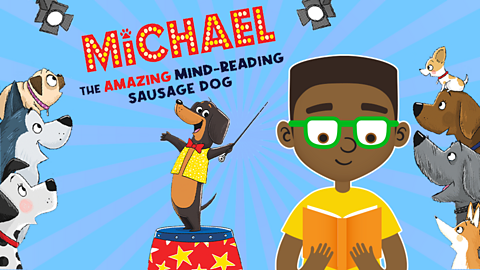What is the book about?
This guide is produced in partnership with Blue Peter.
You are History, written by Greg Jenner and illustrated by Jenny Taylor, is the tenth title in the Blue Peter Book Club. Discover all the fun, silly and sometimes shocking stories of the objects you use every day. Toilets, alarm clocks and an interesting way people styled their hair. This book has it all!
You can get a sneak peek of the book over on Blue Peter.
You are History by Greg Jenner.
Delve into the hidden histories of everyday objects and along the way discover some incredible and hilarious stories.
Did you know that the first TV was made out of biscuit tins and knitting needles?
Or that the humble paperclip helped lead an anti-war movement?
And that a few hundred years ago. it was fashionable to style your hair with cat poo?
Urgh!
What is the difference between fiction and non-fiction?
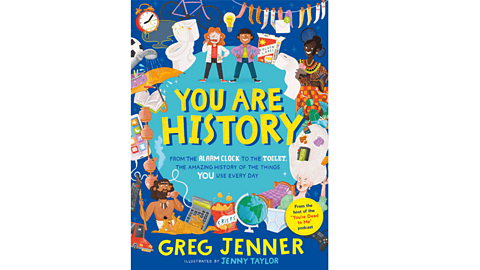
Did the interesting factsInformation that is definitely true and can be backed up with evidence. in You are History make you think more carefully about the things you use every day?
You are History is a non-fictionWriting that only uses facts (things that have happened or are true). book, full of facts.
But what's the difference between fictionWriting that is partly imaginative/made up. and non-fiction?
Fiction is made up, you need to use your imagination when you are writing or reading it. Types of fiction include stories, plays and poems.
On the other hand, non-fiction books are all about facts; you can't just make it up.

What are the types of non-fiction?

There are many different type of non-fiction writing including:
- newspapers
- adverts
- brochures
- biographies
- information books like You are History
To learn more about the difference between fiction and non-fiction visit this KS2 Bitesize English guide.

How are introductions used to start a topic in You are History?
Did you spot the writing at the start of each new topic? This is called an introductionThe text at the start of a new topic (subject). and has been used very effectively throughout You are History.
An introduction is used to show where something new in your writing starts. In You are History, introductions are used to make it clear that a new topic (subject) is starting.
The introductions in You are History are also written in a friendly style, as if Greg (the author and guide throughout the book) is talking to you. For example:


This writing style makes you feel like the guide (Greg) is talking directly to you! Using this friendly, welcoming toneThe attitude that the author (writer) shows towards you, the reader. in the introduction makes you feel familiarSomething that is well known to you. with the topic that you are reading about.
When you feel familiar and comfortable with a topic, it makes it easier for you to learn more about it!

From which point of view is the book written?
You can write from different point of viewThe voice a story is written or told in: first, second or third person.. A point of view is the voice that something is written or read in.
We call these points of view the:
- first person
- second person
- third person
You are History is interesting because it is written from all three viewpoints - first, second and third person!

First person
When you write in the first person, you put yourself inside the writing by describing how you felt and what you were doing using 'I'.
Greg, the author of You are History, does this lots!
'I bang into stuff in the dark, ouch!' (page 46)


Second Person
When writing in the second person, you talk to the reader directly using 'you' and 'your'. This type of writing feels personal to the reader as it makes you feel more included and involved in the book.
You are History uses second person point of view writing very well in the introductions to each topic.
'You've finished school and it's stopped raining, so you hop on your bike and pedal home.' (page 92)

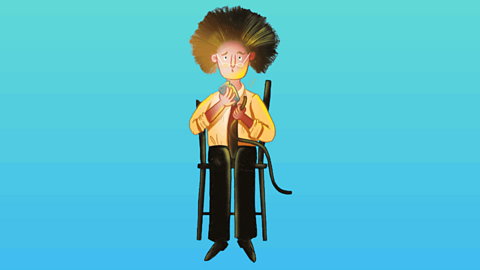
Third Person
When you are writing in the third person, the writing is about other people.
Use the name of the person you are writing about or pronounA word that can used in place of the proper noun (E.g 'she' instead of Lauren). such as 'he', 'she' or 'they'.
' John Logie Baird was a brilliant inventor born in 1888…he connected a telephone system to connect his bedroom to his friends' houses.' (Page 130)

Read this excerpt from You are History. Is it written in the first, second or third person point of view?
'Your fizzy drink isn't a freebie?'
This excerpt is written in the second person point of view because it uses the word 'you'.
Discover more about first, second and third person point of views with this Bitesize guide.
What is the difference between a formal and informal tone of writing?

Did you notice that You are History is written in a very friendly, chatty way?
We call this tone of writing informalWriting that is friendly and chatty (Non-standard English). because it is casual and less serious. Depending on the words used, we might also call this 'Non-standard English.'
But how is this different to writing in a formal toneWriting with a serious voice (Standard English).?
A formal tone is written in a serious, less friendly way with few feelings. Sometimes you might also call this tone 'Standard English.'
You are History is different to lots of other informative non-fiction books because if its informal writing tone. Usually, information books like this are written in a serious, formal way!

Quiz 1
Quiz 2
Activity
Now that you know the difference between formal and informal tones of writing, it's time to try some yourself!
Look back at the rather informal introduction from page 24 about underwear.

Your challenge is to re-write that introduction in a formal tone.
Remember: A formal tone is serious and less chatty. Imagine you are writing as if you were talking to your Head teacher or even King Charles!
More on Blue Peter Book Club
Find out more by working through a topic
- count12 of 13
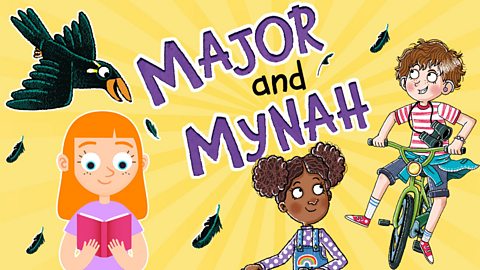
- count13 of 13

- count1 of 13
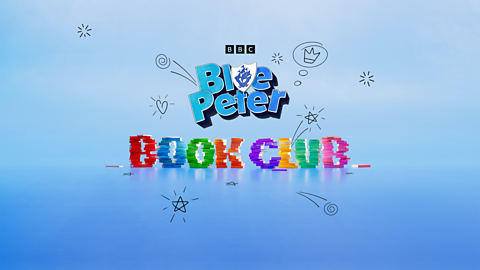
- count2 of 13
